Shareholder Activism on Sustainability Issues is Surging

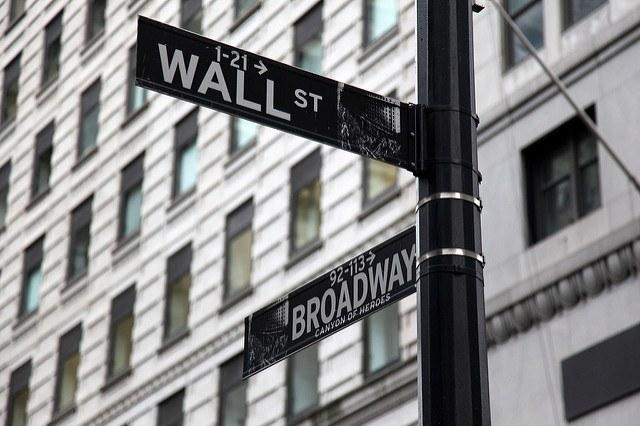
It was not long ago that shareholder activism most often focused on changing the trajectory of what investors saw as a rudderless or poorly-run company. Corporate governance directives, such as changing directors on a board, swatting aside a CEO or reining in executive salaries, have long been driven by proxy statements that asked shareholders to vote on such proposals.
But a Harvard Business School study suggests that concerns over environmental and social sustainability challenges are the the fastest growing cause behind today's shareholder proposals.
The joint research led by Jody Grewal, George Serafeim and Aaron Yoon found the number of documented shareholder proposals doubled between 1999 and 2013. They used a broad definition of “sustainability,” (the authors prefer ESG, or environmental, social and governance). Serafeim, who summarized the research for the Harvard Business Review, found that issues such as political spending, climate change, workplace diversity and human rights have emerged as the subject of far more frequent resolutions in recent years.
Of course, the knee-jerk reaction of many companies is to insist that shareholders vote no on the proposals, or scuttle them altogether. One example is ExxonMobil’s attempt earlier this year to exclude a climate change proposal from its most recent proxy ballot. The Securities and Exchange Commission (SEC) overruled ExxonMobil on that spit-spat, but history shows that manipulating the shareholder resolution process is hardly necessary. Many of these proposals fail, often struggling to reach the "yes" threshold.
But this Harvard study posits that crossing that 50 percent threshold on these votes is not necessary for the proposals to influence a company. In fact, the research indicates that the submission of a proposal related to social or environmental sustainability can nudge a company to improve its performance on such issues. Even though Serafeim and his colleagues concluded that as many as 58 percent of these proposals were financially immaterial to the company, they suggest that raising such issues can still push companies to change their business practices.
More companies now understand that taking a proactive stance on these challenges, instead of trying to quash them, can gain investors’ trust and confidence, the evidence suggests. For example, the Canadian oil sands giant Suncor actually urged its shareholders to vote “yes” on an environmental proposal. That proposal passed with 98.18 percent at its annual shareholders meeting in April.
Many Wall Street analysts still adhere to the Milton Friedman view that environmental and social concerns related to a company’s performance are unnecessary distractions from the firm's goals, which are to make money and increase shareholder value. On that point, the data in the over 2,000 proposals studied show that company executives often responded aggressively to these shareholder proposals, even though history shows that most of them fail anyway, and do so by an overwhelming margin.
Such action by companies is often done for several reasons, Serafeim says. Perhaps the goals of a company’s executives and those of its investors were not aligned; the company fundamentally struggled to discern between what proposals were genuinely material or immaterial; or such opposition to an immaterial issue was calculated to distract investors and the general public from another problem the company wished to see swept under the rug.
But the study claims that this outlook could be true for shareholder proposals that are financially immaterial to a company. Many of these resolutions related to sustainability issues, however, are important -- whether they are related to human rights concerns within a firm’s supply chain or a company’s consumption of, or investment in, fossil fuels.
Indeed, the passage, or the executives’ and board’s acceptance, of a sustainability-related shareholder resolution could at first have a negative impact on a firm’s financial performance. In the end, however, shareholder activism can improve overall financial performance while strengthening the trust between investors and the company.
Image credit: Chris Brown/Flickr
Sustainability on the Menu in Copenhagen: 3 Stand-Out Restaurants to Try
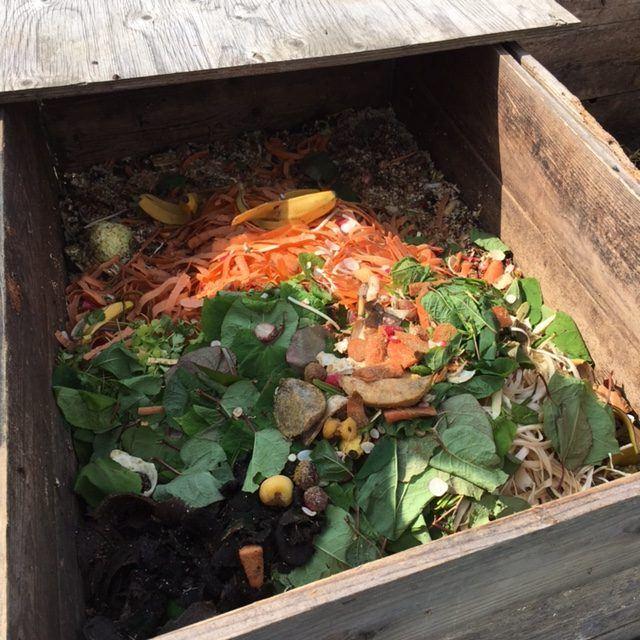

Copenhagen is a city where everyone seems to be doing interesting things. Designers, entrepreneurs and restaurateurs are celebrated, approachable and everywhere. It’s also a place where sustainability is ingrained in the culture. Danes are fervent recyclers. Bikes crowd out cars on busy urban streets. Thirty percent of the country’s electricity comes from wind power, and Denmark is constantly setting itself new and more ambitious renewable energy and waste reduction goals.
To top if off, Copenhagen is also a place that’s long been known around the world for its delicious Nordic cuisine. This may be due to Noma, the frequent winner of "best restaurant in the world."
I can’t tell you anything about Noma. We couldn’t get a reservation there. But that doesn’t matter.
Everywhere I dined in the city -- from the smallest of coffee shops to the fanciest gourmet seven-course, prix fixe menu -- restaurants served food that will blow your mind. But beyond the delicious eating there is a bigger and better story where the concepts of food and sustainability are becoming more and more entwined with restaurants placing the triple bottom line at the forefront of their business model.
Nearly every restaurant I found had a message of sustainability on the menu, but none were heavy-handed with their approach. Indeed their modesty was as impressive as their accomplishments.
Although almost every restaurant has a tale to tell, the following three Copenhagen restaurants stand out on how gastronomy can meet sustainable business:
1. Baest
It all started with a pig farmer and his sustainably-raised pigs. When the owners of Baest (which translates to Beast in English) and their chef Kristopher Schram met Paul Hindsholm, a pig farmer in rural Denmark, they knew they could create a whole menu around his pigs.
“The pigs stay with their mother as long as they like, and they wander around in the fields their whole lives,” head chef Schram told TriplePundit. “He actually kills them in the fields so they never need to leave the farm ... They live in a beautiful field on a beach. I want to live there.”
The Baest menu uses the whole animal -- from nose to tail -- in pancetta and house-made charcuterie that includes a pork liver pate, fennel salami and ciccioli.
“I know it's trendy to say nose-to-tail, but we do it from a business standpoint,” Schram said. “From a business standpoint it allows us to use this expensive product in a restaurant that is more casual. Put it side-by-side with a commodity pig, and the difference is just so clear. This meat is just better quality.”
Baest is primarily a pizza joint with wood-fired pies cooked in an instant in a Stefano Ferrara oven. Their mozzarella comes from milk farmed locally and sustainably and is hand-stretched in the dairy directly above the restaurant every single day.
https://youtu.be/I1E8ZjbYakk
It’s happy food from happy sources, and that makes all the difference.
2. Manfreds
Manfreds is primarily a vegetable restaurant, but they happen to serve some of the finest raw meat in the Western hemisphere. Their steak tartar (which comes in two sizes and is so popular it's available as takeout) comes from cows raised outdoors on natural feed.
A map adorns the wall of the bar area showing exactly which farms in Denmark Manfred sources their veggies from, 90 to 100 percent of which are organic. When it comes to sustainability, Manfred and its sister restaurant, the Michelin-starred Relæ, focus on sourcing, environment and society. They don’t sell pre-packaged bottled water at either restaurant and recycle the restaurant’s wine bottles as water decanters instead. When the water bottles return half empty, they use the remaining water for staff meals or staff meetings.
The perfect meal at Manfreds starts with their bowl of raw meat layered over a bed of lightly poached eggs flavored with lemon, olive oil, salt and pepper. It continues with a seven-course vegetable tasting menu which does things with veggies you didn’t even know were possible.
3) Amass
Take a twisty, turny bike ride away from Copenhagen’s center, past the anarchist village of Christiania and into an old industrial zone. In an unmarked warehouse on Refshalevej is Amass, one of the most celebrated restaurants in Copenhagen. The walls are formed of brutalist concrete, and everyone looks like they stepped out of a design magazine. A vast garden stretches across the front yard out to the water.
"Do you both eat all the things in the world?" our waiter asked.
“We do,” I replied.
"That makes me happy," he said.
Every dish on the Amass tasting menu of five courses comes with a story. One of these includes finely-shaved carrots with the consistency of pasta, curled around salted goat cheese and sprinkled with pickled fennel seeds.
The goat cheese is aged for two years. The chef had recently stumbled upon a small dairy farm without any goats, just cows and sheep. The farmer unveiled a small supply of his aged goat’s cheese, the last of the farm's haul from goats who had left more than 18 months prior.
“We call it inception goat cheese,” our waiter laughed. “Because it comes from goats who don’t exist anymore.” Amass bought the whole lot.
But this isn't a place that's too cool for its own good. The staff is sweet and kind and actually cares about whether you’re enjoying their food. All the wines on the menu come from producers around the globe who are still more farmer than winemaker. Amass’s green kitchen waste goes to feed free-range chickens at one of their meat suppliers. There is a fully functioning worm farm on-site to fertilize all of the plant growth, which allowed Amass to reduce their waste from five trash cans emptied three times a week to just two emptied twice a week. All excess water from the kitchen is put into storage tanks for use in the garden and greenhouse, saving 5,200 liters a year.
“It was amazing to us how much water we were able to save,” explained Jackie, the urban farmer for the restaurant. “It was a great way to make a bridge between what goes on in the garden and what goes on in the restaurant.”
Jo Piazza is an award winning journalist and bestselling author. Her latest book How to Be Married will be released in April.
Images courtesy of the author7 Tips for Your Next Cause Marketing Campaign


By Kerri Moore
More than three-quarters (87 percent) of consumers say they would gladly choose one brand over any other if that brand represented or benefitted a worthy cause.
And more than 90 percent of college students said they would be less likely to skip through or ignore an ad that promoted the company’s relationship with a charity.
All of that is just to say that cause marketing is incredibly influential— and beneficial to all parties involved.
Businesses that run cause marketing campaigns receive a boon in sales; the nonprofits they partner with secure crucial funding, and most importantly: the communities and causes they serve get help and recognition.
It could not be more of a perfect win-win-win situation.
But just as with any other sort of marketing or fundraising campaign, there are more than a few best practices.
That’s why, in this article, we’re exploring the top tips for your next cause marketing campaign.
Want to increase your revenue while you make the world a better place? Find out how by scrolling down!
1. Decide on a scale-appropriate cause marketing tactic
There are dozens of ways for business to give back.
Beyond donating and giving out grants, companies that are looking to bolster their corporate social responsibility (CSR) may choose to invest in cause marketing.
That being said, there are also dozens of avenues that a business can pursue within cause marketing, including (but certainly not limited to):
- Point-of-sale cause marketing,
- Also known as register programs, point-of-sale cause marketing involves asking consumers to donate a few dollars in addition to the purchases that they make at a given store.
- Purchase or action-triggered donating,
- This is typically when a consumer makes a purchase, and a portion of the proceeds are put aside for a cause.
- Product licensing,
- Companies will pay to put a nonprofit’s name or logo on their products. Often, these products will boast donating a percentage of the proceeds to the nonprofit.
- Fundraising events,
- Hosting events, like charity auctions, is yet another way for a business to raise money and awareness for a certain cause.
- Employee engagement,
- Many companies choose to incentivize their employees to donate their time volunteering with certain causes as a way to boost their reputation and do good in their communities.
- Message promotion,
- Message promotion is a form of cause marketing during which a business backs a certain stance while partnering with a nonprofit that would like to get that message across but doesn’t have the expendable resources that a larger company does.
- And digital programs.
- This one is fairly simple and just involves a company using their social media outlets to raise money and awareness on behalf of a nonprofit organization.
Not all of these tactics will be feasible for your company. And that’s okay.
The key is to find a CSR option that works well with the size and scope of your business.
Cause marketing avenues like licensing products can be expensive and involved processes — ones that take time, approval processes, and deep pockets.
If you don’t have all three of those attributes to bring to the table, but you still want to make some positive waves, you can always host a fundraising event or run a digital PR campaign.
Need some advice for how to launch an event on behalf of your favorite charity? Make sure you check out Booster’s fundraising event tips.
Takeaway: Choose the tactic that makes the most sense for your organization and know that some cause marketing strategies involve substantially more time and money than others.
2. Be sure that your values align with the cause you’re marketing
As you’re contemplating a partnership with a charitable organization, take a moment to assess if the cause you’re about to support aligns with your business’s mission statement and overall values.
Let’s say that you’re a sporting goods company.
Would it make sense to partner with a charity that primarily builds homes for those that need them in other countries?
Sure, it’s a worthy cause, and certainly some business should take up that mantle.
But does it fit in with your target demographics? Does it speak to what your business is all about? How do sporting goods relate to this cause?
The answer is simple: the cause is worthy and wonderful, but it’s just not a proper fit.
A more well-suited cause marketing campaign might have something to do with promoting healthy lifestyles— encouraging children to get out and play for 60 minutes a day, for instance.
Partnering with a health and wellness advocacy group, then, might make more sense for a sporting goods business.
Not only does it make more business sense, it’s also just all-around more beneficial for the cause. The more targeted your marketing, the more support you’ll be able to garner for the charity you’re helping out.
Take a page straight out of the book from these companies: 5 Companies Doing Corporate Philanthropy Right.
Takeaway: As long as your company’s values align well with those of the cause you’re aiming to market, you’ll not only help your own reputation, but you’ll also be able to have a greater impact and reach for the nonprofit you’re supporting.
3. Create branded products for your campaign
Slightly different from licensing products to raise money and awareness for a nonprofit, creating branded products like T-shirts and mugs is yet another way that even smaller businesses can help benefit great causes.
If there’s a cause that your small (or even large) business is passionate about, then branded products are absolutely a consideration you should make.
There are countless options for creating your own products to sell on behalf of a nonprofit or in support of a message.
And there are, of course, companies like Booster that facilitate cause marketing through T-shirt creation and crowdfunding promotion.
How does something like T-shirt crowdfunding work, though?
It’s actually pretty intuitive. All it really takes is:
- Creating your own custom design (with professional help, if you need it),
- Setting a goal and therefore a price for each item,
- Customizing a crowdfunding page,
- Promoting said page online,
- Tracking sales/donations,
- And finally, collecting your funds.
You can also set this kind of cause marketing up in conjunction with a fundraising event, like a 5K fun run or a benefit concert.
That way, you extend your marketing reach, you entertain your key demographics, and you leave participants with a lasting representation of your company’s affiliation with a great cause.
Think about it: the next time any of your event’s participants wear the shirt you created, they’ll be reminded of the fantastic time they had as well as the positive association of the charity they supported with your help.
Once again, cause marketing is win for everyone involved. And of course, you don’t have to limit your scope to T-shirts, although, they do pair particularly well with fundraising events.
Click here for more creative ideas for your next fundraising campaign.
Takeaway: Designing and marketing a fundraising product is a wonderful way to raise money as well as awareness for a given cause or nonprofit.
4. Make your cause marketing campaign viral-worthy
If you know anything about social media, you know that “viral” is not as off-putting or foreboding as it sounds.
It has very little to do with disease and a lot to do with the hottest kind of marketing these days.
Viral marketing, in essence, is a method of product (or cause) marketing that relies on consumers to spread the word about an idea, service, or product to their friends and families, who then tell their friends and families until everyone’s heard about it.
A prime example of a viral cause marketing campaign was the ALS ice bucket challenge.
Everyone and their grandmother was dumping buckets full of ice water over their heads on the internet in the name of raising awareness and funds to find treatments and the cure for amyotrophic lateral sclerosis — ALS.
These videos were shared all over because they were:
- Short,
- Entertaining,
- Meaningful and impactful,
- And imperative (if someone tagged you in their video, you had to post one of your own).
And it wasn’t just social-media-savvy millennials participating, either. The ice bucket challenge touched all facets of the population because of its universally positive and hopeful message.
So how does your business create viral content?
Unfortunately, there’s no set recipe.
There are some essential components to viral content, however. Chief among them is universality. If your message is infinitely relatable, then chances are people will share your content of their own volition.
Authenticity is another factor that’s way up there. If people feel that your message is not genuine, they’ll be far less likely to share it on their personal pages.
Above all else, people want to feel that viral content speaks to them and about them.
When they share it with their friends and family, they’re hoping that it represents their personal brand well. Everyone wants to be associated with a great cause, with something larger than themselves.
Keep all of that in mind, and you’re destined to create an amazing digital cause marketing campaign (with the potential to become viral).
But just like you can’t plan to win the lottery, you can’t plan for your content to go viral. It does help to buy lottery tickets— and to craft incredible campaigns.
Takeaway: Creating viral-worthy cause marketing materials isn’t impossible. It takes time and a lot of forethought— and some luck, we’ll admit. But the crucial step is investing in infinitely shareable ideas that tap into the human experience.
5. Involve your employees in your cause marketing campaign
It may seem counter-intuitive to let your employees leave for an hour each week to invest their time and energy in a nonprofit’s cause.
But allowing them to spend that hour each week volunteering is actually not a waste of money for your company.
It’s an investment. In the future, and yes, in your company.
You see, when employees feel that their companies have their communities’ interests at heart, they’re more incentivized to continue working and to work harder.
CSR is an important part of most modern employees’ decisions to stay with or sign on with a company.
Even when an employee works remotely, there are ways to engage with them that further your cause marketing and corporate social responsibility goals.
If your company participates in programs like matching gifts or volunteer grants, you can absolutely make that a focus of your cause marketing campaign.
Regardless, it’s a good idea to involve your employees in your cause marketing and CSR. Not only are they bound to have some stellar ideas, they’re also more likely to engage with your programs if they feel like they’ve had a say in the process.
Let your employees’ voices be heard, and you’ll be sure to hear a resoundingly positive echo.
This could mean letting them choose the charity you support by a democratic vote. Or it could mean rotating the the causes you market to appease multiple kinds of passionate employees.
Takeaway: Involving your employees in cause marketing decisions will ultimately make both your company and your campaign more successful.
6. Turn the campaign into an annual fundraising event
Imagine if Earth Day had just been a flash in the pan in 1970.
It easily could have been.
Because it was such a success the first year, though, it became an annual event. Now it’s such an ingrained tradition that people hardly remember that it started as a small movement.
It’s celebrated in over 190 countries worldwide.
Okay, so maybe your cause marketing campaign won’t be quite as far-reaching or universal. But it could absolutely become a local or even a regional tradition. A staple in your community, if you will.
All it really takes is:
- Hosting a spectacular fundraiser,
- Gauging interest for next year,
- Planning a new twist on the same theme,
- And arranging for the event to be recurring.
If you strike PR gold the first time around, you’ll never know until you try again if it was a fluke or a fabulous idea.
You may be sitting on the idea for the next Earth Day!
Need some ideas for making your fundraising events more exciting and engaging? Look no further than Booster’s ideas for spicing up your next event.
Takeaway: Another great way to enhance a cause marketing campaign is by turning a one-time fundraising event into an annual tradition.
7. Don’t forget to follow up with donors
One of the biggest mistakes that businesses and nonprofits alike make is forgetting or neglecting to follow up with their supporters.
More than 50 percent of donors cite leaving an organization or discontinuing support of a business due to a lack of communication.
That’s why it’s of the utmost importance that throughout your campaign and certainly in the wake of it, you should be periodically filling supporters in on the latest news.
Whether that means letting them know exactly how much money has been raised through joint efforts or giving them status updates on the projects that the money is funding, it’s critical to keep donors and consumers up-to-date.
You can follow up via:
- Social media
- Advertisements
- Phone calls
- And more
In addition to these methods, letters are a great way to communicate with consumers and donors.
There are few things as personal and meaningful as receiving a nice, thoughtful letter in the mail. Especially one that thanks the recipient for their part in making the world a better place.
Takeaway: In order to keep supporters coming back, it’s important to keep in contact with them and update them on the progress of your endeavors. It’s also a good idea to thank them along the way.
That’s all, folks!
Thanks so much for reading. We hope you learned a bit more about cause marketing and how you can enhance your next campaign.
Kerri Moore is the Director of Marketing at Booster, Created by CustomInk. She and her team help create content aimed at maximizing organizers’ fundraising potential and furthering their mission to raise awareness for the cause or passion that means the most to them.
Images courtesy of the author
How a Simple Idea Could Make Data Centers 25 Percent More Efficient


By Kayla Matthews
Computer scientists figured out a way to improve the efficiency of data centers by 25 percent. The trick? They tweaked operating systems so the computers powering them would share processing power. While in an idle state, these systems are able to perform extra tasks without being bogged down when they are needed for Web-based tasks.
More importantly, this new method will help lower operating costs as the related hardware will use less power. From the outset, it may not seem all that exciting — or innovative — but the big data industry will definitely benefit from this discovery.
One project collaborator, Dr. Kathryn McKinley from Microsoft, explained the implications of her team’s findings:
"[Our] work has the potential for enormous impact in data centers [and] could save over 25 percent of the energy bill for these companies, [which is] a huge win."Dr. McKinley says the modified systems “share resources by exploiting simultaneous multithreading in a new way.” Apparently, it's a feature that's been around for some time.
McKinley also claims that most companies simply disable this feature, because it has a negative effect on performance and user experience.
Obviously, by using the methods drawn upon by these scientists, the performance remains balanced. This is a crucial detail for several reasons, which we will get to in a bit.
For now, let’s take a closer look at the team behind this amazing find.
Who is responsible?
The team responsible includes researchers from the Australian National University (ANU) who worked alongside Microsoft. It consisted of Professor Steve Blackburn — from ANU’s Research School of Computer Science — Dr. Kathryn McKinley and Ph.D. students like Xi Yang.
Their system improves energy efficiency and performance for servers used to run web searches and interact with users.
Perhaps what’s most intriguing is that the technology used by the team has been around for some time now. If most companies disable the Simultaneous Multithreading function like Dr. McKinley said, where did they get the idea to employ the feature and create such a system?
Blackburn says the idea was borrowed directly from a Brothers’ Grimm fairy tale: the Elves and the Shoemaker. Essentially, a poor shoemaker receives much needed help from elves in order to complete his work and keep himself afloat:
"Servers spend a lot of time waiting for search requests to [arrive]. By sneaking in other processes while they are waiting, we can use computers more efficiently."
The way the computers are able to perform work in an idle state is akin to how the elves used the shoemaker’s tools at night. At least, that’s how Blackburn described it.
What does this mean?
You may not know this, but a speed delay in web search or similar services is unacceptable. It can cause a great deal of headaches for those monitoring these systems, and also for the users who are taking advantage of them.
Delays often translate to slower performance and a sluggish user experience.
Naturally, this is why data centers opt to keep their hardware running at optimum speeds to ensure they are ready when a query comes in. Without the system from these researchers, servers generally suffer from performance loss while multitasking. So, the companies involved prefer not to use the computers for other tasks. It results in a costly energy bill and the gradual run-down of server hardware.
There are other ways to lower the bills, such as choosing professionally refurbished hardware, for example, to replace old, inefficient parts:
"The secondary market for IT networking equipment has become a multi-billion dollar market because of how well used Cisco network equipment continues to perform," says equipment reseller Worldwide Supply.
But for the most part, data providers are stuck with high consumption rates and bills. It’s just the nature of operating server hardware. The new multithreading system will allow data centers to enjoy lower energy usage — and lower bills — without a serious performance hit. It’s a win-win situation all around.
Image by New Old Stock
Kayla Matthews is a healthy living writer and blogger who writes for The Huffington Post and The Climate Group. Follow her on Facebook or at ProductivityTheory.com.
The Secret Weapon of Effective Sustainability Project Managers


By Justine Burt
A few years ago, I interviewed dozens of sustainability project managers (SPM) at medium-sized businesses to better understand what enabled their success. The interviews boiled down to three questions. Think about your best sustainability project. What conditions external to your company helped you be successful? What conditions supported you within your organization to complete the project? What qualities do you possess that helped you realize a successful outcome?
One person’s answer to the last question surprised me. When I asked what it was about him that helped him complete a challenging project he said, “my charisma.” He explained further: “Look, I was asking my co-workers to give up their lunches, nights and weekends to help our company achieve LEED green building certification. It’s a lot of work. People only spend their free time on things that are meaningful to them with people they enjoy.”
Why charisma is important
The more I thought about the most effective SPMs I knew, the more this answer made sense. The SPMs I thought about not only had strong technical, financial analysis and communications skills, but they also had charisma.SPMs often struggle with limited resources and need to enlist help from people in the organization that do not report directly to them. Green teams usually have employees from various departments. For the leader of the company’s sustainability efforts to be effective, they need the three essential components of charisma so they can charm people to want to help them. Those three essential elements are presence, power and warmth.
Fortunately, charisma is a quality people can cultivate. Olivia Fox Cabane’s book "The Charisma Myth" explains the fine points she fosters with CEOs and other leaders to help them become more influential, persuasive and inspiring. What’s interesting is that developing personal magnetism starts with figuring out which kind of charisma best fits your personality: focus, visionary, kindness or authority. Oprah Winfrey’s presence is key to her focus charisma. Apple’s Steve Jobs had visionary charisma. Radiant warmth from the Dalai Lama shows he exhibits kindness charisma. Former U.S. Secretary of State Colin Powell has authority charisma.
Companies often hire sustainability managers with strong technical skills. While understanding the engineering aspects of renewable energy, energy efficiency, water conservation and zero waste projects are important, those sustainability managers who also have strong people skills that inspire behavioral changes will help their organization reach their ambitious sustainability goals faster.
Image credit: Flickr/Jacob Botter
Based in Palo Alto, CA, Justine Burt is the founder and CEO of Appraccel, a company that embeds part-time sustainability project managers in businesses to implement operational efficiency projects. Contact her at [email protected] or check out appraccel.com for other recent blog posts.
Ontario unveils plan to promote social enterprises


Social enterprises use business strategies to achieve a social or environmental impact. While generating revenues from the sale of goods and services, social enterprises also expressly intend to create positive outcomes, and measure their results. As their business grows, so does their social impact.
Ontario, the most multicultural province in Canada, is home to about 10,000 social enterprises, which are building solutions in the fields of inclusive employment, education, health and environmental sustainability. Now the province has launched a five-year strategic plan to strengthen a thriving marketplace of sustainable and scalable social enterprises.
Ontario’s Social Enterprise Strategy 2016-2021 will support social enterprises to grow their businesses, enter new markets and create jobs, while addressing complex social and environmental challenges. One of the key initiatives will be to integrate social entrepreneurship into mainstream entrepreneurship programs, such as those offered through the Ontario Network of Entrepreneurs.
Other feature initiatives include developing a Social Enterprise Procurement Action Plan to increase the Ontario government’s procurement from social enterprises, exploring the design of a Social Venture Investment Fund to accelerate the flow of private investment capital to growing social enterprises, establishing an Impact Measurement Task Force to build consensus on uniform impact measurement standards for social enterprises, and establishing a Center of Excellence in Social Enterprise and Social Finance.
Social Impact Bonds
Ontario’s social enterprise strategy will include piloting one or more Social Impact Bonds (SIB) to improve social outcomes. Two SIB ideas are already moving forward. An SIB idea proposed by Mainstay Housing aims to provide stable housing and intensive support to 100 chronically homeless individuals. The program focuses on individuals struggling with mental illness who have been homeless for five years or more. Mainstay’s SIB proposal would use best practices from the Housing First model.
Another SIB idea proposed by the RAFT targets over 900 at-risk young people, primarily in underserved rural areas surrounding Haldimand-Norfolk County, Niagara Region and Hamilton, to increase high school graduation rates and improve housing stability. With the support of community partners, the proposed program will focus on helping young people make healthy lifestyle choices, while acquiring the necessary social, emotional and educational skills.
Some of the social enterprises that are already making an impact across the province include: Building Up, Groupe Convex, CigBins, Options Printing, and Good Foot Delivery, which support inclusive employment; Twenty One Toys, Forward Vision Games, Textbooks for Change, Jump Math, and Future Design School working in the field of education; SolarShare, KARIBU Solar Power, CoPower, and Fresh City Farms tackling environmental challenges; and QoC Health, Eve Medical, Lucky Iron Fish, Plan A Health Care Staffing Solutions, and TranQool, which are improving health and wellness outcomes for under-served populations.
Source: Ontario
Image Credit: Flick via Stern UC
White House Invests $150 Million in Tomorrow's Tech Workers
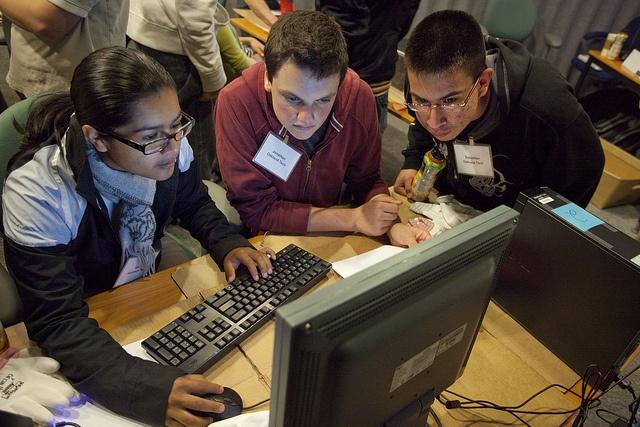

On June 27, the White House announced TechHire grants totaling $150 million. The cash will fund 39 recipient partners across the country as they spearhead skills-training in technology. And the administration hopes these partners can devise new ways to train and place burgeoning talent in the growing global tech sector.
A refresher on the TechHire Initiative
To better understand what the initiative entails, you can visit the White House technology website and read on its history. Here are the important details of TechHire:
- It was announced in March of 2015 by Vice President Joe Biden and Department of Labor Secretary Thomas Perez.
- It's comprised of three parts: 21 communities with over 300 employer partners for training programs; private-sector companies and national organizations for support; and an original $100 million in federal grant funding.
- The training will concentrate in sectors like tech, manufacturing and healthcare, which are rapidly growing in the nation.
- By TechHire’s one-year anniversary, a total of 50 communities had joined the initiative.
What TechHire brings to Americans
TechHire’s new influx of assistance for future workers in computer or information sciences help people and companies interested in the project in multiple ways:
- It helps boost the local economy directly and indirectly, and it's intrinsically tied to an increase in the local middle class.
- Companies with difficulty in filling out their employee base with the best, most skilled talent now have assistance in acquiring those workers.
- Fast-track programs prepare the interested and unemployed with information and skills needed for tech jobs. These programs are designed using novel ideas in hiring and training.
- TechHire gives millions of Americans technical skills needed for jobs in STEM (science, technology, engineering and mathematics) fields.
Finding the new labor force through innovation
With the job paradigm shifting toward technology, it is apparent that a traditional educational track is not necessary anymore. In the past, many of our best programmers and software engineers did not even finish college.
With data and innovative techniques, companies and organizations have created programs like coding bootcamps and online training programs. These new learning systems help students learn tech skills at a pace faster than traditional programs. These programs are constantly upgrading and expanding for an ever-growing market.
The communities of TechHire
The U.S. tech sector is expanding throughout all regions of the country. Here are two examples:
In the last five years, Seattle added 63,000 new jobs on account of a tech sector growing at a rapid pace. The city is one of the new communities added to TechHire since its inception. Public- and private-sector organizations will work with the city to train people in tech. And the goal is to employ 2,000 people in tech jobs by 2020.
In June of 2016, the Obama administration launched a South Central Appalachia branch of TechHire. Its goal is to prepare over 50 people in tech jobs with the help of the private sector, the Appalachian Regional Commission and the University of Virginia’s College at Wise. This comes from an interesting trend of bringing IT jobs back from offshore companies to rural communities in the heart of the U.S.
Both Seattle and Appalachia join other communities like ones in Hawaii, Texas, Ohio and New York in the push for converting the unemployed into productive members of the new sector.
The nonprofit role in tech job expansion
In the spirit of creating this new crop of American tech workers, nonprofits are helping TechHire by putting strong efforts in advancing the initiative. For example, Washington D.C.-based Oppportunty@Work provides webinars to people who want to learn about best practices, tools and resources. Opportunity@Work also has a website, TechHire.org, which serves communities as a network of employers and Americans with the desired IT skills.
Tech jobs as a way to uplift the at-risk
From the TechHire Initiative grants, $126 million will be allocated for disadvantaged young Americans ages 17 to 29. This includes $50 million in H-1B technical skills training grants, $20 million in grants to expand training for adults returning from correctional facilities and more.
Many organizations are already considering financing options for lower-income Americans who want the training for better jobs but do not have the means. This is similar to how companies assist communities with poverty housing.
The future of TechHire
It is imperative that the U.S. creates a steady tech workforce in such a competitive global economy. There are powerful obstacles – like a skills gap that considerably hurts the economy – that can be solved if this initiative continues, or even expands. With an upcoming change of administration, TechHire should be a program that is preserved for the economic safety of the nation.
Image credit: Flickr/Berkeley Lab
Greenpeace Calls Out Leading Fashion Brands in ‘Detox Catwalk’
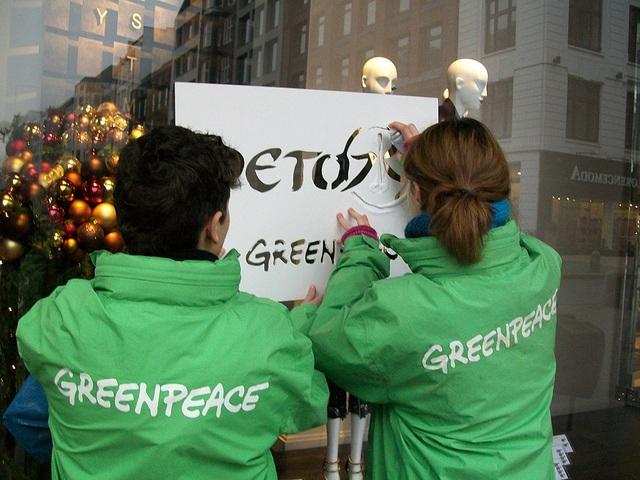

The global fashion industry has a massive impact on the environment. This impact extends from the pesticides used to grow fibers such as cotton to the impact textile dyes have on water in countries where regulations tend to go unenforced.
Since 2011, Greenpeace has called on leading brands to eliminate hazardous chemicals from their supply chains. And it achieved some impressive: Seventy-six leading fashion houses made the commitment to detoxify their operations by the end of this decade. In what Greenpeace calls its third annual “Detox Catwalk,” the environmental organization lauds the companies that are changing their ways, while rattling the cages of companies it believes are doing nothing.
So who scores highly on this front, according to Greenpeace?
The three companies have sold Greenpeace on their believable timelines, strong action and actual the execution of their plans -- and they happen to be giants in the fast fashion space. Inditex (which operates the popular Zara chain), Benetton and H&M won plaudits for moving to eliminate toxins such as PFCs to making progress on their long-term “zero discharge” plans.
Greenpeace says these three companies, which earn almost $50 billion in combined revenues, back up their promises with transparency and concrete plans. The organization’s assessment of Inditex, for example, applauds the company for vigorously going beyond the 11 groups of chemicals Greenpeace targeted for elimination.
As for other leading fashion brands, many of the most recognizable brands are making progress, especially on transparency. But many are lag on the Greenpeace list because they were slow to develop a plan stating how they will remove toxins from their manufacturing processes. The Italian fashion house Miroglio Group, for example, has made progress on Greenpeace’s three big issues: ceasing the use of PFCs, a plan to stop using toxic chemicals by 2020 and transparent disclosure about their progress. Other firms, however, still have work to do, and that list includes Adidas, Levi Strauss, Mango, Marks and Spencer, and Puma. Luxury brands including Burberry and Valentino are also falling behind, in Greenpeace's view.
Then there are the companies Greenpeace accused of going backward. That roster includes Esprit, Limited and the Finnish sportswear company Li-Ning. And despite what the company says is its leadership on sustainable chemistry, Nike also falls under this category.
Many of the European companies Greenpeace ranks, however, should see improvement due to the actions promised by an industry group representing the largest textile manufacturing district in Europe. Earlier this year, 20 companies from the Prato district in Milan announced they would commit to Greenpeace’s call to clean up their supply chains by 2020. Clothing manufactured appear under coveted labels including Armani, Burberry, Prada and Valentino.
Several leading brands, however, are apparently doing nothing and in Greenpeace’s words “have failed to take responsibility.” The list runs all over the garment industry’s price spectrum, with Armani, Bestseller, Diesel, Hermes and Versace earning the equivalent of what Greenpeace would call an “F” grade in describing their efforts.
In Greenpeace’s eyes, which in general always place a distrustful watch on the world’s largest companies, we've certainly seen progress in what it insists is a dirty and irresponsible industry. But if the earth’s waterways are going to heal from years of discharging toxic chemicals, much additional work lies ahead.
Image credit: Flickr/Greenpeace Hamburg
Uber Takes on New York’s MTA with Cheap Rides in Manhattan
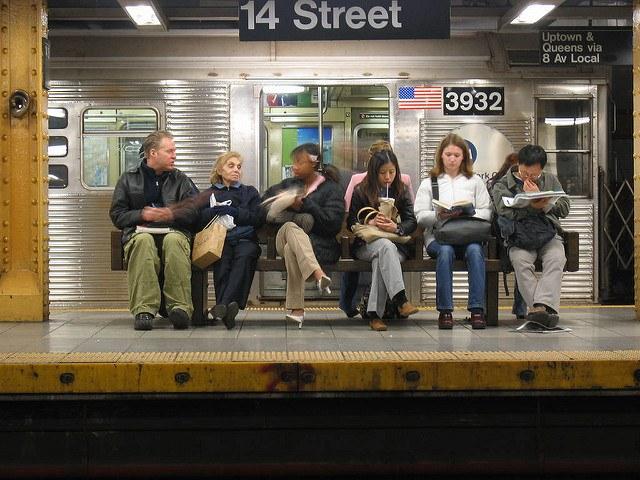

Uber -- the ridesharing service everyone loves to hate, but also loves to use -- is taking on New York City’s subway system.
Users of Gilt City, the popular flash sales site, can score a two-week unlimited UberPool commuting fare card for just $49. Compare that rate to that of the Metropolitan Transportation Authority’s (MTA) seven-day unlimited commute card, which sets you back $31. Commuters using UberPool can get to and from the office in Manhattan for just $2.45 a ride, a cost that is over 25 percent cheaper than commuting by subway. True, the cost-per-ride of an unlimited subway pass decreases if the user rides on the weekends, has meetings all over town or runs errands during the day. But for many commuters, this UberPool offer is more than tempting.
Of course, the offer only applies to Manhattan south of 125th street, not to the neighborhoods north of Morningside Heights and central Harlem, nor to any of the four surrounding boroughs. And to be clear: The offer is only valid during a three-hour window in the morning and between 5:00 p.m. and 8:00 p.m. at the end of the workday. If you happen to work long hours or arrive at the office super early, normal Uber rates apply. Riders cannot change their final destination at the last minute, and they need to be at the agreed pick-up spot within two minutes of arranging that lift.
But this campaign shows that Uber could grab a huge stake in New York’s transport system, whether the city wants it around or not. This new offer comes on the heels of Uber’s announcement earlier this year that UberPool would offer rides in the same area for a flat $5 fare.
Nevertheless, Uber’s price war against the nation’s largest transportation system reveals the company's might, despite constant criticism over its tactics. The offer also sheds light on the shortcomings of public transportation in New York and across the country.
Indeed, New York’s subway system, which launched in October 1904, is impressive and has largely withstood the test of time. Its builders and designers were visionary enough to see the need for occasional double tracks, allowing for express trains to run during peak commuting hours. Contrast that approach with systems such as the Bay Area’s BART, which years ago made the penny-wise, pound-foolish decision not to have a wider Transbay Tunnel, adding to the ongoing woes and strain on the system.
But the fact is that despite its modernization and improvement, New York’s subway is still old. Many of the subway stations are quite uncomfortable during the city’s hot and humid summer months, as well as during winter. And for those who struggle to live in Manhattan, the subway is still relatively expensive.
True, one can point to other systems in the U.S. or abroad that are even more pricey. But compare rides elsewhere to New York’s single fare of $2.75: The fare in Tokyo is about $1.60 for a local ride; Seoul fares start at $1.20; and Paris metro fares are approximately $2. New York’s subway is a great deal if you are moving from the Bronx to Queens, and even from an outlying borough to the Financial District or Midtown. But within the confines of Manhattan, commuters are always searching for better options.
Those pricier transit systems, moreover, are in cities with a high cost of living, expensive real estate and substantial labor costs. So while organizations such as the American Public Transportation Association (APTA) are quick to tout studies citing public transport’s benefits, no one is exploring the reason why public transportation projects, and infrastructure projects in general, are so expensive in the U.S. Whether they are new rail systems or updates and extensions of current ones, transportation systems are becoming too pricey to build, so cities are too spooked to invest in them. Once such projects are finished, there is little appetite-- much less any room in the budget -- for municipal governments to fund updates to these transportation systems, even though they go far in reducing congestion. And less congestion reduces commuters’ stress while improving worker productivity, and in the long term, can improve public health.
Not that Uber is offering a long-term solution to America’s transport woes, or will have a leading role in the transformation of our urban centers to smart cities. This low-priced offer presents plenty of questions. Can Uber, which still has not made its investors money, profit off upending New York’s commuting system? Then there are the company’s drivers. Many of them have long chafed at Uber’s terms of employment. But other workers desperate to rake up some cash will surely be tempted by the company’s car leasing program, despite its onerous terms. An influx of pick-ups and drop-offs will also irritate local municipal officials, as Uber has a history of balking at safety regulations to the point that Austin, Texas, slammed the door on the company’s operations in that city.
Uber’s attempt to shake up New York’s public transportation system, however, is a signal that America’s cities and federal government have a lot of ground to cover, and answers to give, as more needs to be done to ensure better transport to keep our cities working.
Image credit: Collin Mutchler
Animated Video Highlights Labor Abuses in Palm Oil Supply Chain


The global palm oil industry insists it is improving its environmental and human rights record. But many NGOs believe the commodity’s impact on people and the planet is becoming even worse.
Meanwhile more companies, including General Mills last month, are responding to pressure from environmental groups to drop suppliers running afoul of the industry’s sustainable palm oil sourcing guidelines. And more governments, including Colombia, have begun to crack down on palm oil companies accused of human rights violations or deforestation. But their efforts are akin to taking a butter knife into an AK-47 fight, as clearly more work is needed on this front. At times, it seems the only environmental relief comes when the palm oil industry is in a slump, as reports suggest current demand has slowed down and prices have declined.
To that end, Rainforest Action Network (RAN) released an animated video that highlights the organization’s largest criticisms of the palm oil industry. The video focuses on: the sector’s impact on workers and the environment; the alleged non-compliance of a PepsiCo joint venture in Indonesia; and the plight of three palm oil plantation workers, whose experiences tell the tale of what NGOs call endemic labor abuses throughout much of the industry.
https://www.youtube.com/watch?v=BHreDVWW0Fo
The video, launched on RAN’s Facebook page earlier this week, is lucid, brief and gets straight to the point. A PepsiCo joint venture sources as much as 450,000 tons of palm oil annually from Malaysia and Indonesia, RAN informs viewers in the video. Half of all consumer packaged goods worldwide contain palm oil, it continued. And the amount of virgin land cleared in Malaysia and Indonesia to make way for palm oil plantations could be larger than the states of California and New York combined.
RAN highlighted human rights abuses, particularly ongoing issues within the Indonesian PepsiCo joint venture, in a report issued earlier this year. Workers at these vast palm oil plantations have been subjected to a bevy of abuses, RAN says. Working conditions include the typical long work hours for low wages, excessive exposure to agricultural chemicals, confiscation of passports, and massive daily quotas that force some workers to have their families, including children, join them on the job in order to avoid the risk of having their wages cut.
These abuses have long been rampant in the industry. And NGOs including RAN and Greenpeace continue to make clear that that food manufacturers and palm oil suppliers have not done nearly enough to implement much-needed reforms. Despite the promises from the likes of confectioners such as Hershey and producers including Singapore-based Golden Agri, environmental groups and human rights activists suggest that they did not go far enough. The difference in RAN’s latest campaign, however, is that PepsiCo is clearly the most visible target and bête noire of the organization.
The strategy is clear. Relentlessly and loudly calling out PepsiCo, one of the world’s most visible beverage and snack foods brands, could actually convince other companies that it is in their interest to embrace transparency and commit to cleaning up their global supply chains. Once NGOs have their way and can convince PepsiCo to develop a palm oil procurement policy that satisfies environmental and human rights advocates, it should not take PepsiCo’s competitors long to fall in line. The video is a powerful start, and it projects a clear and forceful argument: These companies ignore RAN and other NGOs at the risk of harming their long-term brand reputation.
Image credit: ILO/Flickr